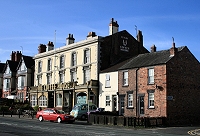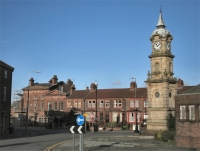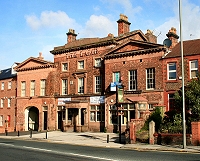 |
Return along Arnold Grove and do a quick right and left into Chestnut Grove. This is the start of Victoria Park, an pleasant and secluded area of early 19th century housing. At the end do another right and left into Orford Street, one of the most attractive streets in Wavertree Village, where every house is a listed building, I understand. Continue your tour of Victoria Park by turning right into Sandown Lane by the Edinburgh pub. Continue to the end, noting stuccoed Sandown Terrace on the right. Turn left into Long Lane and left again into Salisbury Terrace, another charming row of old houses. At the end is a narrow road to the left that will return you to Sandown Lane. Head back to the High Street and turn left. On the left, just before the point where you earlier left the High Street, is the Cock and Bottle pub, adjoining which on the right is 'The Smallest House in England' [7] (now part of the pub). |
 |




